Vacuum cleaner filters: features and types

Nowadays, it is quite difficult to imagine our life without cleaning equipment - detergents and all kinds of cleaning products have become truly indispensable helpers of housewives in the struggle for cleanliness and order in the house. Among those features that should be paid special attention to when choosing a suitable model of a vacuum cleaner is the degree of filtration, since the ability to achieve maximum cleaning performance of the room depends on it. Modern models can have a wide variety of filter types. The most popular is the fine filter.

What it is?
Probably, most housewives simply cannot imagine their life without a vacuum cleaner, which greatly facilitates all the work on landscaping and maintaining a comfortable existence in a residential area. On the shop windows there is a fairly wide selection of vacuum cleaners of various brands and manufacturers - pre-motor and motor, microfilter, round, universal, air, with a magnet, vibration filter, cartridge, foam, sponge and many others. This abundance of models can simply confuse the average buyer.
If you intend to achieve maximum air purity in the house, then first of all, when choosing a mechanism, you need to pay attention to the filtration system. It's no secret that clean exhaust from a vacuum cleaner is the secret dream of any housewife, which is why manufacturers work tirelessly to improve the quality of their products.

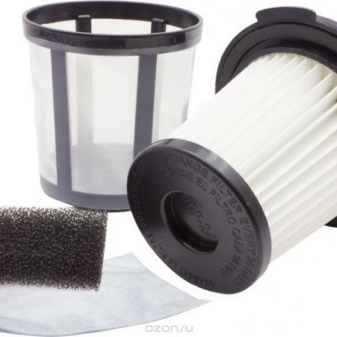
In an effort to maximize the amount of dust retained, manufacturers are constantly upgrading their vacuum cleaners, equipping them with the most modern cleaning system. It is believed that the most effective are HEPA filters, which, according to manufacturers, retain the maximum percentage of dust particles.
The first HEPA systems appeared in America back in the 50s of the last century. They were created for the implementation of nuclear projects, but gradually migrated to the peaceful industry, where they began to be widely used for domestic purposes. These installations were used to equip ventilation systems in those rooms in which increased requirements were imposed on the quality and degree of air purity.


Any such filter looks like a material folded in the form of an accordion with a fibrous structure, fixed in the body in such a way that the accordion does not straighten out. The most reliable material that does not interfere with the passage of air flow, while reliably forming obstacles to the penetration of dust particles, is thin paper treated with a special composition. And also filters designed for fine cleaning are made of artificial material, but the quality of such a model is an order of magnitude lower than that of paper counterparts.


Views
All modern models of vacuum cleaners have different filters of different types. Several options are most popular.

Bag
This dust collector can be made of fabric - such products as are used correctly all the time, or of paper - these are disposable products that are thrown away as they are filled. It is very important that the dust container holds all small debris as well as collected dust particles. As a rule, such bags are made in two layers, so that they cause the removal of trapped particles, in addition, they ensure that they do not come into contact with it when they are removed from the device.
The working suction power of the entire device as a whole largely depends on the ability of the material to pass air. At the same time, it is obvious that large pores are clogged in the first place, since when this happens, the suction power drops sharply. The coarse filter is responsible for the primary cleaning of the air flow in the main tank and for collecting debris. They hold from 50 to 95% of all dust, but in most cases these are particles over 0.31 microns in size, which are quite large, but microparticles freely pass through these obstacles.
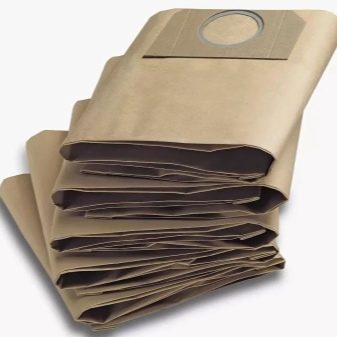

Aquafilter
This is a water filtration system. Due to humidification, even the most microscopic dust particles settle at the bottom of the container, thereby retaining even the smallest debris.


Cyclonic
The principle of operation of the cyclone filter is simple - due to the creation of a vortex inside the vacuum cleaner, debris and dust adhere to the walls of the vacuum cleaner, after which they immediately fall into the dust collector, and the air, having passed additional cleaning, is removed back into the room.

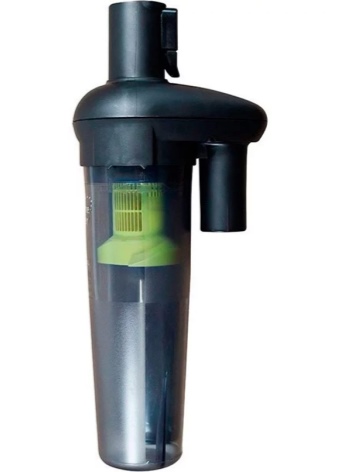
HEPA filters
As already mentioned, they are among the most efficient cleaning systems. They provide high-quality air purification from polluting dust particles and all kinds of allergens. Most often, such a filter is used in addition to one of those listed above. HEPA stands for High Efficiency Particle Containment. Initially, the system was used only in medical institutions, but gradually filters migrated to household and industrial models.


The advantages of such systems are undeniable, namely:
- have a relatively affordable cost;
- quickly replaced if necessary;
- are easy to operate;
- are always on free sale;
- have an increased level of cleaning.


However, even such a filter has its drawbacks, such as:
- they purify the air exclusively from mechanical pollution - they do not constitute absolutely no obstacle to all kinds of viruses, bacteria and gases;
- filters need periodic replacement as they become dirty.
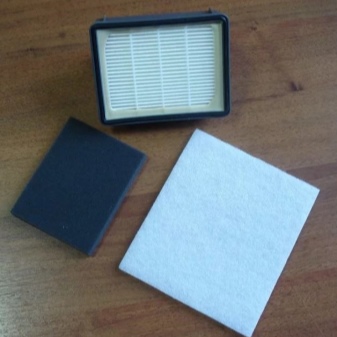

As a rule, vacuum cleaners are equipped with systems H10, H11, as well as H12 or H13. The higher the number, the better the collected dust is removed. So, a filter with the H10 parameter is able to retain only 85% of dust, but for the H12 models this parameter is already 99.5%, the H13 filters are most effective - the percentage of dust retention in them reaches 99.95%, the H14 models are less common - here the corresponding parameter is 99.995%.
Please note that models with a HEPA filter are indispensable for people prone to bronchopulmonary and allergic diseases, and they are also effective in a house where there are pets.


How to choose?
When choosing a vacuum cleaner with an optimal filtration system, one should be guided by consumer reviews and information received from the brand manufacturer. The most effective filtration systems are 3M, Einhell, Type 2 and EIO. The models of such well-known brands as Siemens and Bosch are equipped with a dust collector of the Megafilt SuperTEX system. It has an additional micro-pore fabric layer, which ensures maximum working suction power, even when the dust bag is completely full.
Products of the Thomas AIRTEC brand have a four-layer dust collector made of fabric, while the products from Germany, Melitta, are a multilayer tissue paper bag that filters the smallest particles down to 0.3 microns, while each subsequent layer retains ever smaller dust particles.
Thanks to this structure, the service life of the filter is significantly increased and the operation of the entire vacuum cleaner as a whole is facilitated.



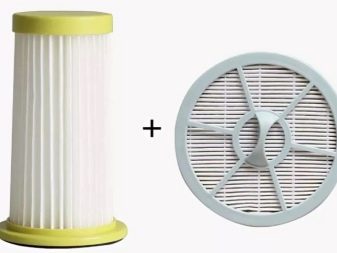
Many modern models are equipped with the Swirl MicroPor mechanical filtration system.Its advantage is the work of three stages of cleaning - the first two levels act as a traditional dust collector, retaining rather large dust particles up to 1 micron, and the third allows you to clean the air from microparticles and, notably, from bacteria, which often cause serious diseases. Thus, the first levels work as a coarse cleaning system, and the third - fine. In the most popular Philips units, dust collectors are impregnated with a special antiseptic solution, which effectively destroys bacteria immediately after they enter the bag.
Such vacuum cleaners are likely to be appreciated by people predisposed to pathologies of the respiratory system.


At the same time, each manufacturer to this day produces a line of vacuum cleaners with the usual reusable fabric bags. The reason is simple - these vacuum cleaners are much cheaper, therefore, they are optimal for people with an average and low income. In addition, a cloth bag can be used for several years, and a paper bag needs to be changed regularly, which entails a waste of money and time to purchase them.


In most modern models from Samsung, LG, Electrolux, Rowenta, as well as Hoover, Bosch and Siemens, the dust collector is a reservoir located in the middle of the product body - these are cyclonic models. They come in two versions.
- In cyclones of the first kind air moves spirally, where, under the influence of centrifugal force, it sticks to the walls, loses speed and immediately settles, remaining in the tank itself. Then the treated air is passed through motor and foam filters and is discharged in jerks outside.
- In cyclones of the second kind the air to be cleaned is moved to the container, where the speed is instantly reduced. In this case, more than 95% of particles settle to the bottom, and all fine dust is picked up by vortices and moved to a spongy motor cleaning filter impregnated with a fungicidal preparation, after which it enters the outlet compartment and is discharged outside. Such filters have their own advantages, among which a consistently high power of work comes to the fore, which does not depend in any way on the degree of filling of the dust collector, and the cleaning process itself is much more hygienic.


Important! Most often, cyclone systems are additionally equipped with HEPA filters, thanks to which they trap the most microscopic contaminants.
At the same time, it should be noted that the manufacturers of all the above models have not been able to achieve 100% retention of dust particles, as a result, together with the exhaust they again enter the living quarters, and from there they go straight to our mucous membrane and lungs. The consequences of all this can be the most unpredictable, as a result, in an effort to protect your family, you can, on the contrary, face irreparable damage.
As an alternative to such filters, water filters act, which cope with the task of retaining dust as efficiently as possible, but at the same time do not cause the slightest harm to the human body, but their cost is much higher than that of all other dry-type vacuum cleaners.

Vacuum cleaners of the German brand Thomas are equipped with water filters - the process of retaining dust particles here is 99.998% and this is the highest result among all vacuum cleaners existing today. In these aquafilters, the incoming air is immediately sprayed with moisture, after which the air is purified in three stages in foam and paper filters. It should be noted that models with an aquafilter also have pronounced hygienic advantages - they not only retain dust particles, but also humidify the air in the house.
In addition, the power of work in this case remains unchanged during all harvesting operations, and cleaning the filter itself is reduced to the timely pouring of contaminated water.
With all of these factors in mind, it comes as no surprise that water cleaning systems are becoming more and more popular in modern vacuum cleaners.


How often do you need to change?
Vacuum cleaner filters need to be cleaned periodically and replaced as soon as they become dirty. In order for the quality of cleaning to be higher, in modern models of vacuum cleaners, several types of filters are used at once, which directly affects the price of the product. Filters can be permanent or replaceable. The former require regular cleaning, after which they restore their dust-holding capacity.
However, this is not entirely correct - even cleaning filtration systems are best replaced after several washes, as the material from which they are made begins to deteriorate. Replacement models are designed for only 50 hours of operation, so they need to be replaced approximately 1 year after purchase.


Important! HEPA filters are made of thin paper or fiberglass. They are disposable items. For the manufacture of reusable, foreplast is used. Their service life is much longer.
For information on how to change the filter for a vacuum cleaner, see the next video.













The comment was sent successfully.